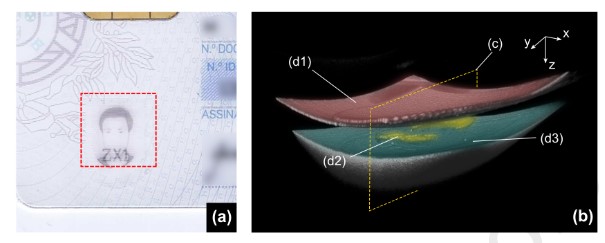
A study on the applicability of optical coherence tomography imaging for questioned documents examination, particularly identification documents (national ID cards and passports) has just been published by researchers from the Applied Optics group, the Forensic Science Research group in our School, and Foster and Freeman, Ltd., a manufacturer of forensic science lab equipment.
This is a unique study for the group and the wider school, where Photonics was so exquisitely used for Forensic Science research. It is also another step in our work together with Foster and Freeman, which should hopefully enable even more fruitful collaboration in the future.
This work, published in Science and Justice, a journal from the Chartered Society of Forensic Sciences, was a collaboration between the Applied Optics Group (Manuel Marques and Adrian Podoleanu), the Forensic Science department in our School (Robert Green, OBE, JP), and Foster and Freeman Ltd (Roberto King, Simon Clement and Peter Hallett). It is a tentative step towards more application of non-destructive optical imaging methods (in the case of this publication, swept-source optical coherence imaging) to different branches of Forensic Sciences – in this case, questioned documents inspection, namely, national ID cards and passports.
Download the accepted (post-review) copy here (available through a CC-BY-NC-ND license). If your institution has an Elsevier subscription, you can also check out the published version here. The full citation of the publication is listed below:
M. J. Marques, R. Green, R. King, S. Clement, P. Hallett, and A. Podoleanu, ‘Sub-surface characterisation of latest-generation identification documents using optical coherence tomography’, Science & Justice, Dec. 2020, doi: 10.1016/j.scijus.2020.12.001.